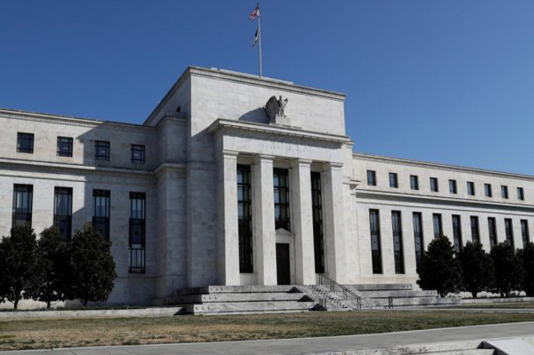WASHINGTON, March 14, 2021 (BSS/AFP) – Skittish investors have see-sawed
between celebration about the expected US economic recovery and nail-biting
over a possible price spiral, but the Federal Reserve is standing firm on
keeping interest rates low.
In the balance between allowing faster growth — and rising prices — in
order to restore some of the more than nine million jobs still missing due to
the Covid-19 pandemic, Fed Chair Jerome Powell’s message has been clear: he
wants to see more people back to work.
Analysts are expecting the Fed’s policy-setting Federal Open Market
Committee (FOMC) to maintain its very “dovish” stance when it holds its two-
day policy meeting next week.
Powell on Wednesday is expected to stress once again that the Fed is
willing to accept higher inflation to get back to full employment, a goal
that took a decade to achieve following the 2008 global financial crisis.
“I think it’s ‘markets be damned’ at this point,” said Robert Frick of
Navy Federal Credit Union.
“The Fed has said that until the real improvement in employment and in
the economy, they’re not going to budge,” Frick told AFP. “I really don’t
think they’re going to waver.”
From a 50-year low of 3.5 percent unemployment before the pandemic
lockdowns began in early 2020, the jobless rate spiked as millions of workers
were sent home, but gradually fell back to 6.2 percent in February amid
businesses reopenings.
As vaccine rollouts have picked up speed and President Joe Biden signed
a massive $1.9 trillion stimulus package, boosting the chances the world’s
largest economy can soon reopen, investors have begun to fear an inflationary
spiral.
That is reflected in the spike in government debt yields, particularly
on 10-year Treasury notes, a canary in the coal mine for coming price
increases.
– Hot but not boiling –
While the jump back to its early 2020 level could be viewed as something
of a market freak-out, there are real-world consequences of rising Treasury
yields, since lending rates for home mortgages and car loans are linked to
them.
Mortgage rates have begun to creep up, which could price some buyers out
of an already-hot housing market, while existing homeowners will find it
harder to refinance their loans, said Kathy Bostjancic of Oxford Economics.
Inflation is expected to rebound, as the economic engine revs up,
especially compared to the depressed prices seen during the pandemic
closures, but any sharp spikes are expected to be temporary.
“The reopening economy is going to be turbocharged by this $1.9 trillion
fiscal stimulus, so there’s no doubt” inflation will rise, Bostjancic told
AFP.
The critical question is how high “and for how long,” she said.
“It’s going to feel warmer, but we don’t think it’s an overheating
situation.”
Over more than a decade inflation has rarely pushed above the Fed’s 2.0
percent target, and the central bank’s preferred price measure was up only
1.5 percent in January compared to a year earlier.
Bostjancic and Frick agree with many economists who say there is a lot
of slack in the economy which will dampen price increases.
– Signal to markets –
Powell has acknowledged that prices will move up but he pledged the Fed
would not withdraw stimulus until the economy had returned to maximum
employment — which is unlikely this year — and inflation was both above the
2.0 percent goal and on track to remain there “for some time.”
“We’re not intending to raise interest rates until we see those
conditions fulfilled,” Powell said.
However, the Fed is not impervious to the market jitters, and Powell
could try again to calm inflation fears by sending a stronger signal that the
central bank will use its tools to address any worrying price increases or
bond yield spikes.
While he has been noncommittal about specifics he could provide more
details in his press conference Wednesday, including on his willingness to
change the mix of debt the Fed buys each month.
And Bostjancic notes the Fed could make another technical move that
could ease pressure on yields, by extending the pandemic exemption on banks
holding of Treasuries without having to have a cash buffer.
That exemption expires at the end of the month.



